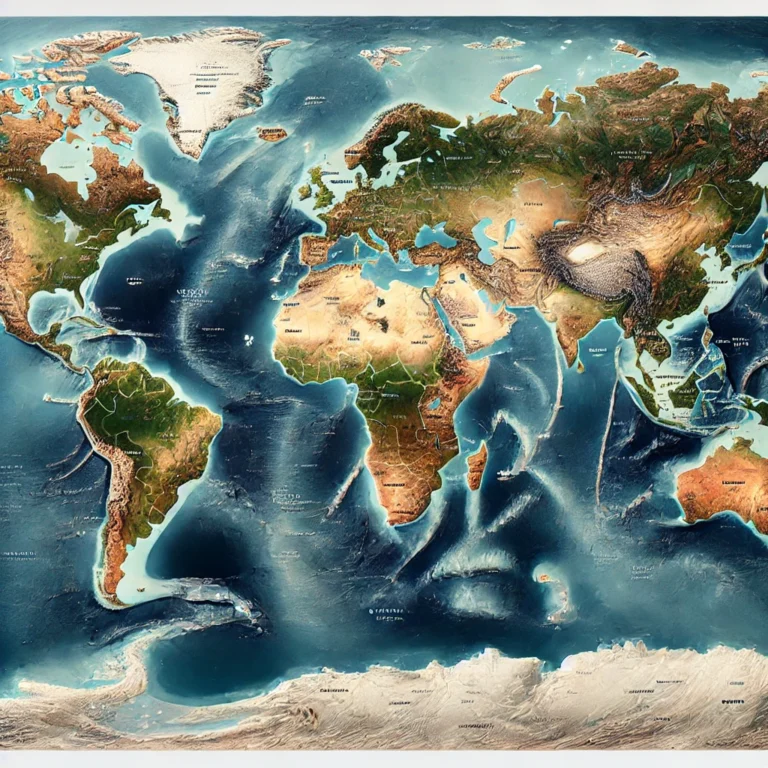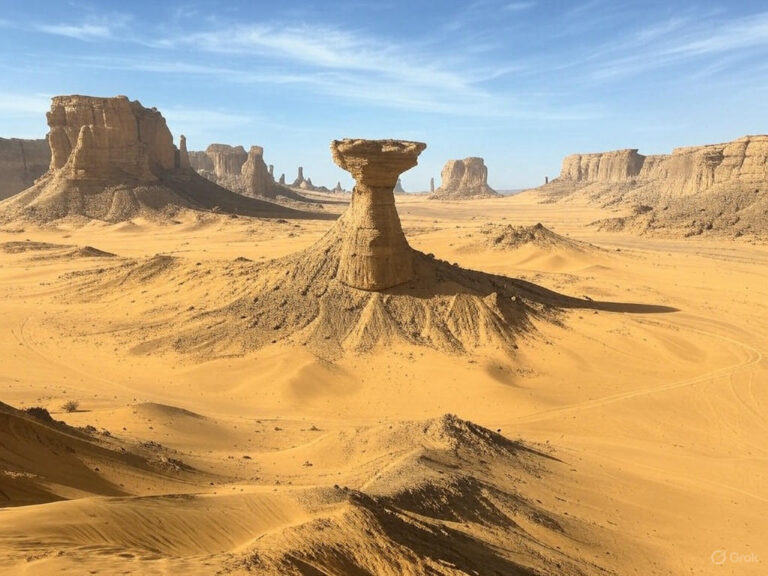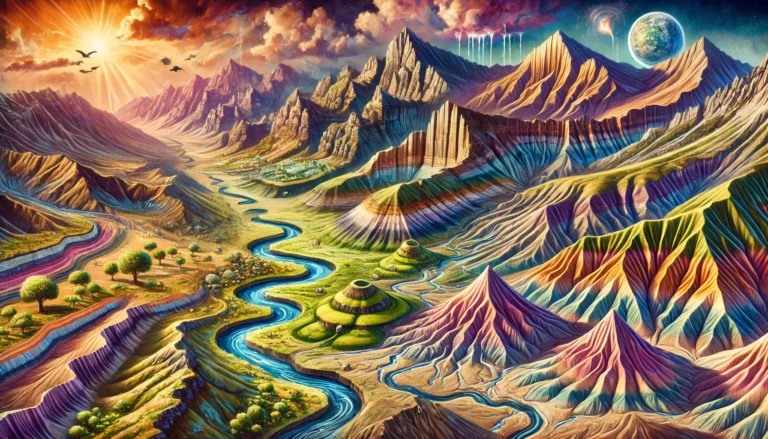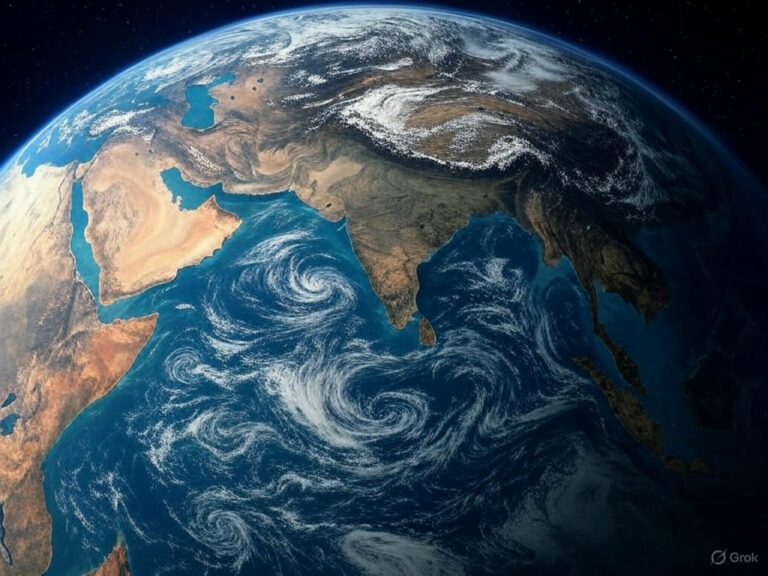Revolution of the Earth
Imagine you’re on a high-speed train that never stops, traveling in a giant circular track around a massive, glowing sphere—the Sun. This never-ending journey is what we call the revolution of the Earth. While the Earth is constantly spinning on its axis (rotation), it is also moving along an elliptical orbit around the Sun. This movement is known as revolution.
The Path of Earth: The Orbital Plane
The Earth doesn’t just wander randomly through space; it follows a fixed path, called the orbit, which lies in a plane known as the orbital plane or ecliptic plane. This plane is significant because most of the planets, asteroids, and other celestial objects in our Solar System also move close to it.
However, not everything follows this neat arrangement. Comets and Kuiper Belt objects (icy bodies beyond Neptune) often have highly tilted orbits, moving at much steeper angles relative to the ecliptic plane.
How Long Does One Revolution Take?
The Earth takes 365¼ days (approximately one year) to complete a full revolution around the Sun. But here’s the catch—what do we do with that extra ¼ day (6 hours) each year?
The answer lies in an adjustment mechanism:
- Every year, these extra six hours are saved.
- Over four years, these add up to 24 hours (one full day).
- This extra day is then added to February, making it 29 days instead of 28 in a leap year.
- A year with 366 days (instead of the usual 365) is called a leap year.
This correction ensures that our calendar remains aligned with Earth’s actual revolution time, preventing seasonal drift over long periods.
Solstice: Earth’s Seasonal Extremes
Imagine the Earth as a grand stage, and the Sun as a spotlight that moves up and down over the year, changing how different regions experience light and warmth. This shifting spotlight brings about solstices, marking the longest and shortest days of the year. These solstices occur due to Earth’s axial tilt (23.5°) and its revolution around the Sun.

Summer Solstice: The Longest Day (21st June in the Northern Hemisphere)
On 21st June, the Northern Hemisphere tilts towards the Sun, making its rays fall directly over the Tropic of Cancer (23.5°N). This results in:
- More sunlight and warmth, leading to summer in the Northern Hemisphere.
- The longest day and shortest night in the Northern Hemisphere.
- In contrast, the Southern Hemisphere experiences winter, with shorter days and longer nights.
- The entire Arctic Circle (66.5°N and beyond) remains in sunlight for 24 hours, leading to the phenomenon of the Midnight Sun.
- This position of the Earth is called the Summer Solstice.
In the Southern Hemisphere, 21st June marks the Winter Solstice, with the shortest day and longest night.
Winter Solstice: The Shortest Day (22nd December in the Northern Hemisphere)
On 22nd December, the Southern Hemisphere tilts towards the Sun, and the Tropic of Capricorn (23.5°S) receives direct sunlight. This results in:
- Summer in the Southern Hemisphere, with longer days and shorter nights.
- Winter in the Northern Hemisphere, where the shortest day and longest night occur.
- The Antarctic Circle (66.5°S and beyond) experiences continuous daylight, while the Arctic Circle remains in darkness.
- This position is called the Winter Solstice.
For the Southern Hemisphere, 22nd December is the Summer Solstice, with the longest day and shortest night.
Midnight Sun: When the Sun Never Sets
Due to the Earth’s tilt, at high latitudes, the Sun doesn’t set for days, weeks, or even months during local summer. This is called the Midnight Sun.
- At the Arctic Circle (66.5°N) on 21st June, the Sun remains above the horizon for 24 hours.
- The closer you get to the North Pole, the longer this period lasts, reaching six months of continuous daylight at the Pole.
- The reverse happens in the Southern Hemisphere on 22nd December.
When the Sun never rises for extended periods in local winter, the phenomenon is called Polar Night.

The Sun at Higher Latitudes: Rising and Setting Near the Horizon
- In extreme latitudes, the Midnight Sun is also known as Polar Day.
- At the poles, the Sun rises and sets only once a year, marking the beginning and end of six months of daylight or darkness.
Daylight Saving Time (DST): Making the Most of Sunlight
To maximize daylight during summer, many countries (mostly in temperate regions) shift their clocks forward by an hour. This practice, called Daylight Saving Time (DST), ensures that people get more daylight in the evening.
How It Works:
- Without DST: A typical office schedule is 10 AM to 5 PM.
- With DST: Clocks are moved ahead by one hour → Work starts at 9 AM and ends at 4 PM.
Advantages of DST:
✔ More daylight for sports, shopping, and leisure activities.
✔ Less electricity consumption in the evening (historically, it reduced the use of incandescent lighting).
Disadvantages of DST:
❌ Disrupts sleep patterns and schedules.
❌ Complicates timekeeping, affecting travel and business.
Equinox: When Day and Night are Equal
Imagine a perfect balance—where the Sun’s light is evenly distributed across the Earth, making day and night equal. This moment happens twice a year and is called an Equinox.

What Happens During an Equinox?
On 21st March (Vernal Equinox) and 23rd September (Autumnal Equinox):
- The Sun’s rays fall directly on the Equator.
- Neither pole is tilted towards or away from the Sun, meaning both hemispheres receive equal sunlight.
- As a result, day and night are nearly equal all over the world.
Seasonal Changes During Equinox
- On 21st March, it marks Spring in the Northern Hemisphere and Autumn in the Southern Hemisphere.
- On 23rd September, it marks Autumn in the Northern Hemisphere and Spring in the Southern Hemisphere.
These seasonal shifts occur because the Earth is moving in its orbit, changing which areas receive the most direct sunlight.
Why Days are Longer than Nights at the Equator?
Even though an equinox should mean equal day and night, something interesting happens at the Equator—days are slightly longer than nights. Why?
Role of Atmospheric Refraction
- The Earth’s atmosphere bends sunlight due to refraction (the bending of light as it moves through different densities).
- During sunrise and sunset, the Sun appears above the horizon even when it’s physically below it.
- This optical illusion extends daylight slightly, making days longer than nights, even at the Equator.
Apparent Position of the Sun Due to Refraction
- Because of refraction, we see the Sun before it has actually risen and after it has actually set.
- This effect is strongest at sunrise and sunset, slightly stretching the length of daytime.

Conclusion
Equinoxes symbolize a moment of cosmic balance, marking the transition between seasons. While the concept of equal day and night holds, the atmosphere plays its own tricks, making daylight last a little longer. So, the next time 21st March or 23rd September arrives, remember—you’re witnessing the Earth’s perfect balance in action! 🌍☀️
Perihelion and Aphelion: Earth’s Changing Distance from the Sun
The Earth’s orbit is not a perfect circle; it is slightly elliptical, meaning our distance from the Sun changes throughout the year. The Sun sits at one of the foci of this elliptical path.
Key Events in Earth’s Orbit
- Perihelion (Closest to the Sun) → Occurs two weeks after the December solstice (~January 3rd).
- Distance from the Sun: 147.1 million km.
- Aphelion (Farthest from the Sun) → Occurs two weeks after the June solstice (~July 4th).
- Distance from the Sun: 152.1 million km.
Since the Earth’s orbit is influenced by gravitational forces (especially from the Moon and other planets), these dates are not fixed and shift slightly over time.

Does This Distance Change Affect Earth’s Weather?
1. Amount of Energy Received from the Sun
- The variation in solar energy received (solar constant) is minimal between perihelion and aphelion.
- The Earth’s orbit is nearly circular, meaning the difference in distance does not drastically alter temperatures.
- In the Southern Hemisphere, where perihelion occurs during summer, the impact is further balanced by the high water-to-land ratio, as water moderates temperature changes.
2. Duration of Seasons
- Earth’s speed varies due to Kepler’s Second Law (A planet moves faster when closer to the Sun and slower when farther away).
- Since Earth moves faster at perihelion (winter) and slower at aphelion (summer):
- Winter (Northern Hemisphere) → ~89 days (shorter).
- Summer (Northern Hemisphere) → ~92 days (longer).
This means summer lasts slightly longer than winter in the Northern Hemisphere.
Kepler’s Second Law & Earth’s Orbital Speed
- Kepler’s second law states that a planet sweeps equal areas in equal time.
- This means Earth’s orbital speed increases at perihelion (closest to the Sun) and decreases at aphelion (farthest from the Sun).
- The same principle applies to the Moon’s orbit around Earth, causing variations in its speed as well.
Conclusion
While perihelion and aphelion don’t significantly affect temperatures, they slightly alter the length of seasons and Earth’s orbital speed. This is another fascinating way in which celestial mechanics shape life on Earth! 🌍☀️






